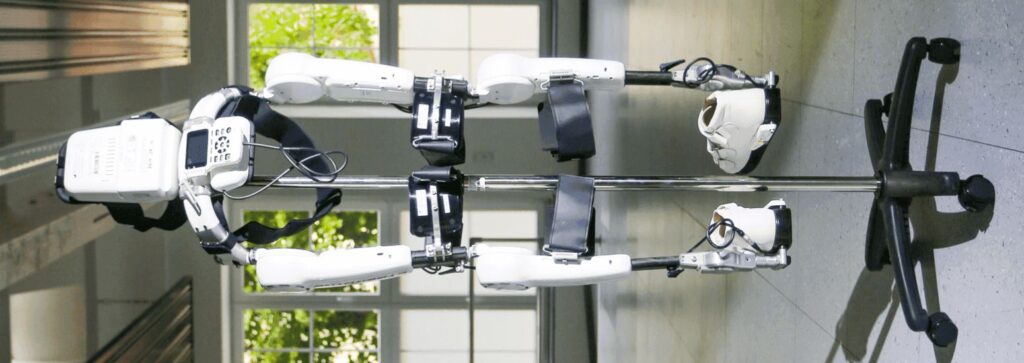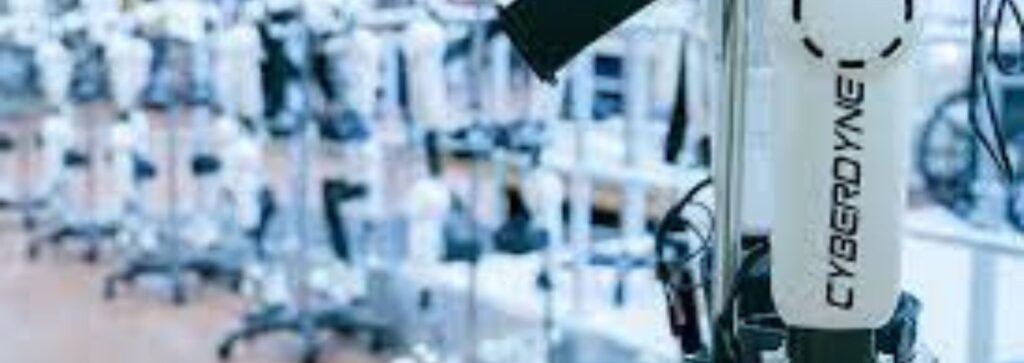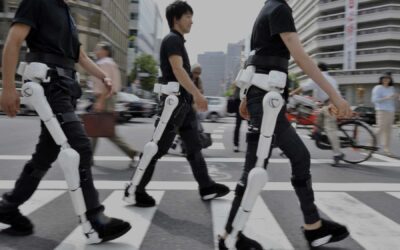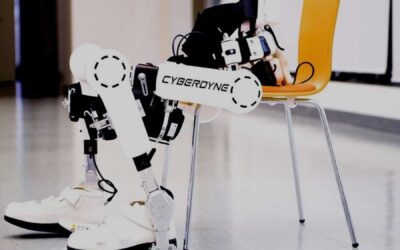The Wearable Cyborg, known as the Hybrid Assistive Limb (HAL), enhances ambulatory function in individuals with slowly progressive rare neuromuscular conditions through cybernic treatment. This innovative technology is the first of its kind to assist and restore the user’s physical capabilities based on their intentions, earning it the nickname “The Wearable Cyborg”.
HAL – Used in Cyberdyne Treatment-
The Hybrid Assistive Limb, also known as HAL, assists in restoring lost bodily functions. It is a therapeutic tool designed for walking exercises, which has been shown to be more successful than traditional methods for individuals with untreatable neuromuscular conditions. This Cyberdyne treatment enhances neural connections within the nervous system.
HAL Steps in Cyberdyne Treatment

When someone plans to move a limb, the brain transmits signals through the spinal cord and nerve cells to the muscles.
Information about “limb movement” is sent back to the brain from sensory signals during the movement. These signal loops help maintain the brain’s health.
Even in individuals with disabilities, signals from the brain to the muscles can be detected on the skin surface as a very faint signal.
Repeated exchange of signals will strengthen the synaptic connections and facilitate relearning techniques. Cybernic treatment enhances and restores the physical function of patients with conditions like neuromuscular disease.
There are five steps that HAL follows in Cyberdyne Treatment-
- When we initiate body movements, we start by contemplating the motion.
- The brain then transmits signals to the muscles.
- HAL interprets the wearer’s desired movements by analysing the signals.
- HAL regulates the power unit based on recognised movements to aid the wearer in moving.
- After the movement is executed, HAL recognises the intended motion of the wearer, and the body provides information about the successful movement. This enables the brain to gradually learn how to transmit the necessary signals for proper movements. Repetition of this process could assist a person with a disability in enhancing their physical function after removing HAL.
Rehabilitation Robots in Physical Therapy

Rehabilitation robots used in physical therapy are created to aid in rehabilitation and have the potential to improve the effectiveness and availability of therapy by assisting therapists in delivering consistent training over extended periods and gathering data to evaluate progress.
HAL has a wide variety of uses, including enhancing physical function in the healthcare and medical sectors, providing assistance with heavy work in other industries, and aiding in recovery efforts at disaster locations through the use of rehabilitation robots in physical therapy.
Testimonial of Patients-
“I want to be able to walk at my daughter’s wedding. When I first used it, I thought ‘This will be great, I’ll be able to walk.’ However, it was very challenging but incredibly rewarding. Initially, the robot had to assist me with all the work. Each time I used the robot, I was able to do a little more until I could eventually do it independently. When it was time to walk at my daughter’s wedding, I was able to walk down the aisle with a walker.”
Says Puschel – HAL Lower Limb.
To learn more about Cyberdyne Treatment, log onto https://rehabmodalities.com/



